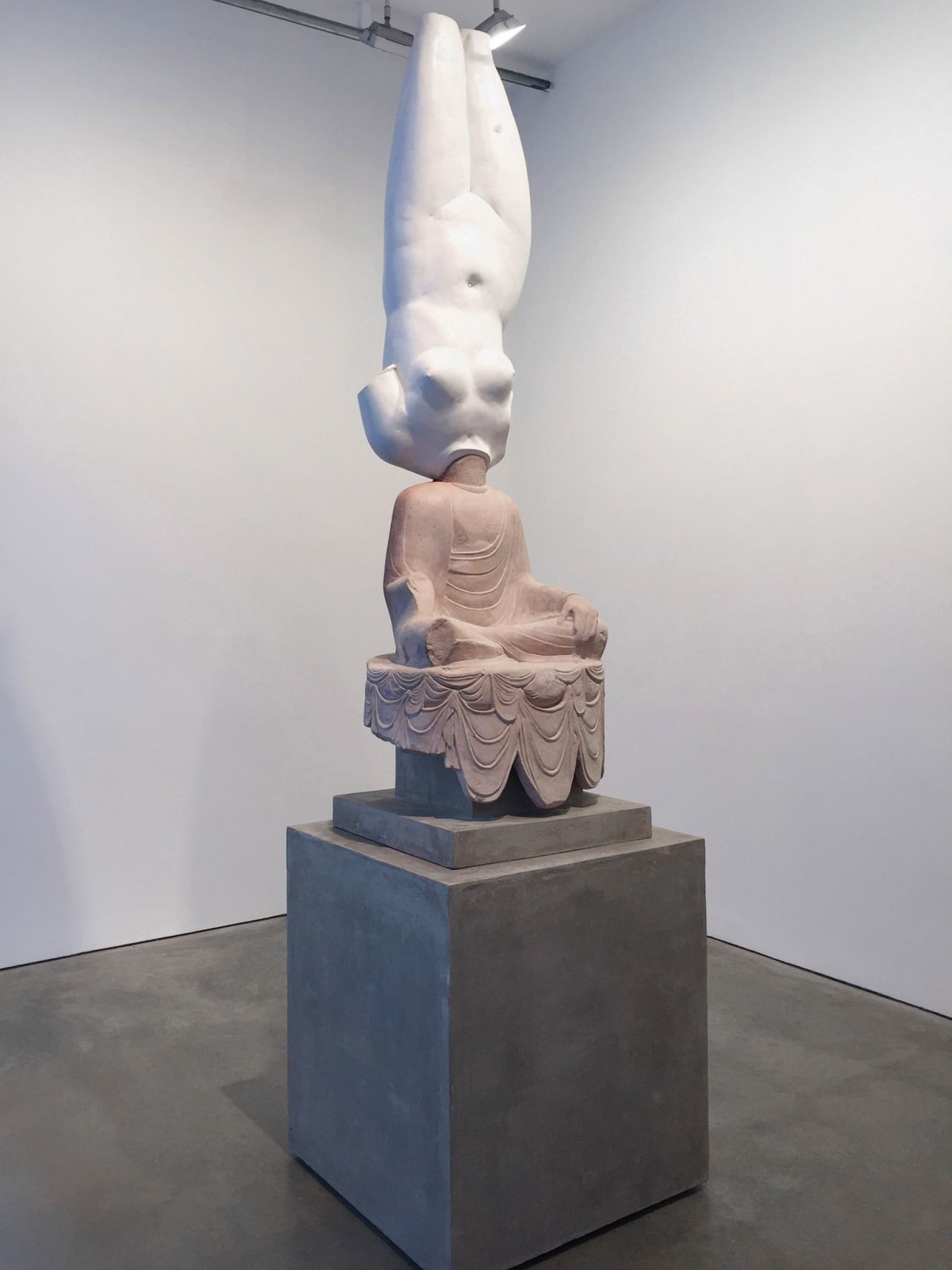-
Artworks






Eternity-Aphrodite of Knidos, Tang Dynasty Sitting Buddha , 2014
Glass fiber-reinforced concrete, marble grains, sandstone grains, mineral pigments, steel355.0 x 91.0 x 91.0 cm
139 3/4 x 35 13/16 x 35 13/16 in.Edition of 3Further images
The Eternity sculptures fuse facsimiles of Hellenistic and Buddhist statuary into three-dimensional exquisite corpses, which become hybrids of transcontinental histories. The result is a deftly composed work that carries the...The Eternity sculptures fuse facsimiles of Hellenistic and Buddhist statuary into three-dimensional exquisite corpses, which become hybrids of transcontinental histories. The result is a deftly composed work that carries the archaeological weight of history, and yet is a sly statement about global similarities and differences.
Eternity - Aphrodite of Knidos, Tang Dynasty Sitting Buddha combines one of the most famous statues of Wesetern antiquity with a Buddhist devotional sculpture, creating a visually arresting composite.
Part of the collections of the Vatican Museums, Aphrodite of Knidos (350 BC) is the most famous of Praxiteles’ works, and perhaps one of the most famous sculptures of Classical Greece. The sculpture is the first monumental female nude in classical sculpture.
The seated Buddha (618-907 AD) was created as a devotion to the celestial Buddha Amitabha (amituo fo) stresses the impossibility of achieving enlightenment during a life lived under less-than-ideal circumstances and promotes the desire for rebirth in Sukhavati, a pure land or way station in which conditions are conducive to the quest for advanced understanding. This Buddha was identified by the position of the arms,
which suggests that the missing hands were in a gesture of meditation.2of 2











